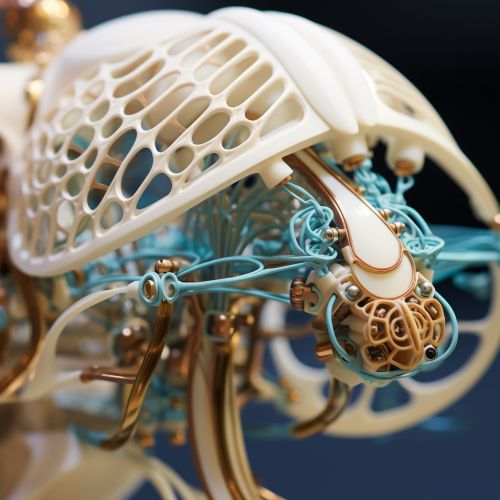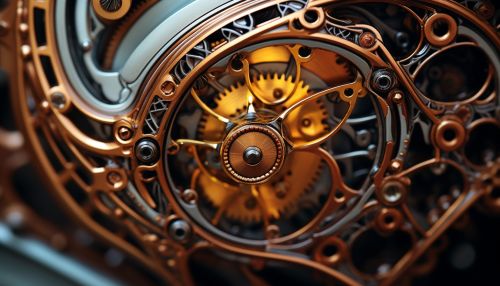Biomimetic Actuators
Introduction
Biomimetic actuators are devices that mimic the movements and functions of biological systems, such as muscles, plants, and animals. These actuators are used in a variety of applications, from robotics to medical devices, and are often designed to be more efficient, adaptable, and resilient than traditional mechanical actuators. The field of biomimetics is a rapidly growing area of research, with new discoveries and innovations being made on a regular basis.


Design Principles
The design of biomimetic actuators is heavily influenced by the principles of biomechanics, the study of the structure and function of biological systems as models for the design and engineering of materials and machines. These principles guide the development of actuators that can replicate the complex movements and functions of biological systems.
Efficiency
One of the key design principles of biomimetic actuators is efficiency. Biological systems are often highly efficient, using the minimum amount of energy necessary to perform a task. This principle is applied in the design of biomimetic actuators, with the aim of creating devices that can perform tasks using as little energy as possible.
Adaptability
Another important design principle is adaptability. Biological systems are often highly adaptable, able to adjust their behavior and function in response to changes in their environment. This principle is also applied in the design of biomimetic actuators, with the aim of creating devices that can adapt to different conditions and tasks.
Resilience
Resilience is another key design principle. Biological systems are often highly resilient, able to withstand and recover from a variety of stresses and damages. This principle is applied in the design of biomimetic actuators, with the aim of creating devices that are robust and can withstand a range of conditions and stresses.
Types of Biomimetic Actuators
There are several types of biomimetic actuators, each designed to mimic a specific biological system or function.
Muscle-like Actuators
Muscle-like actuators are designed to mimic the function of biological muscles. These actuators often use materials that can contract and expand in response to electrical signals, similar to how muscles contract and relax in response to nerve signals. Examples of muscle-like actuators include electroactive polymers and shape-memory alloys.
Plant-inspired Actuators
Plant-inspired actuators are designed to mimic the movements and functions of plants. These actuators often use materials that can change shape or orientation in response to environmental stimuli, similar to how plants can move and adjust their growth in response to light, gravity, and other environmental factors. Examples of plant-inspired actuators include hydrogels and smart materials.
Animal-inspired Actuators
Animal-inspired actuators are designed to mimic the movements and functions of animals. These actuators often use mechanisms that can generate complex movements and behaviors, similar to how animals can move and behave in complex ways. Examples of animal-inspired actuators include soft robotic systems and microelectromechanical systems.
Applications
Biomimetic actuators have a wide range of applications, from robotics to medical devices.
Robotics
In robotics, biomimetic actuators are used to create robots that can move and function in ways that mimic biological systems. These robots can be more efficient, adaptable, and resilient than traditional robots, making them suitable for a variety of tasks and environments.
Medical Devices
In medical devices, biomimetic actuators are used to create devices that can mimic the functions of biological systems. These devices can be more efficient and adaptable than traditional medical devices, making them suitable for a variety of medical applications.
Future Directions
The field of biomimetic actuators is a rapidly growing area of research, with new discoveries and innovations being made on a regular basis. Future directions for this field include the development of new materials and mechanisms for biomimetic actuators, as well as the exploration of new applications for these devices.
